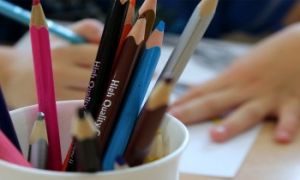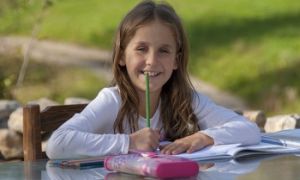Implementing the Kindness Curriculum for preschoolers involves creating a nurturing environment that fosters social-emotional learning and mindfulness. The following article provides information on Strategies For Implementing The Kindness Curriculum, Explaining The Twelve Core Attributes To Preschoolers, Twelve Core Attributes Activities For Preschoolers, Daily Kindness Activities For Preschoolers, Mindfulness Practices For Preschoolers, Linking EYLF To The Kindness Curriculum and more.
Strategies For Implementing The Kindness Curriculum
-
Create a Safe and Inclusive Space: Ensure that the classroom environment is welcoming and safe for all children. Display posters and visuals that promote kindness and empathy.
-
Introduce Mindfulness Practices: Teach simple mindfulness exercises, such as deep breathing and body scans, to help children become more aware of their emotions and surroundings.
-
Incorporate Daily Kindness Activities: Plan activities that encourage acts of kindness, such as sharing toys, helping a friend, or expressing gratitude. Use stories and role-playing to illustrate these concepts.
-
Use the Twelve Core Attributes: Focus on the twelve core attributes of kindness (e.g., honesty, empathy, gratitude) throughout the year. Each term, explore three attributes in depth through discussions, activities, and reflections.
-
Engage Families: Involve parents and caregivers by sharing information about the Kindness Curriculum and encouraging them to practice kindness at home.
-
Reflect and Celebrate: Regularly reflect on the progress made and celebrate acts of kindness. Create a kindness wall where children can post notes about kind acts they have witnessed or performed.
By following these steps, you can create a positive and supportive environment that helps preschoolers develop essential social-emotional skills and a sense of kindness.
About The Twelve Core Attributes
The Twelve Core Attributes of the Kindness Curriculum are designed to foster social-emotional learning and mindfulness in young children. Each attribute focuses on a key aspect of kindness and personal development. Here's a brief overview of each attribute:
-
Kindness: Teaching children to be kind involves encouraging them to perform acts of kindness, such as sharing, helping others, and expressing gratitude.
-
Honesty: Promoting honesty helps children understand the importance of truthfulness and trust. Activities can include storytelling and games that highlight the value of being honest.
-
Perspective: Encouraging children to see things from others' viewpoints helps them develop empathy and understanding. Role-playing and discussing different perspectives in stories can be effective.
-
Collaboration: Teaching collaboration involves activities that require teamwork and cooperation. This helps children learn to work together towards a common goal.
-
Mindfulness: Introducing mindfulness practices, such as breathing exercises and sensory activities, helps children stay present and calm, improving their emotional regulation.
-
Positivity: Fostering a positive mindset involves encouraging children to think good thoughts and stay hopeful. Activities like sharing positive experiences can help build this attribute.
-
Self-Acceptance: Promoting self-acceptance helps children appreciate their unique qualities and build self-esteem. Activities like creating self-portraits and sharing personal strengths can support this.
-
Empathy: Teaching empathy involves helping children understand and care about others' feelings. Reading stories about empathy and discussing emotions can be effective.
-
Compassion: Encouraging compassion means teaching children to be kind and helpful to others. Activities like making cards for others or participating in community service projects can promote this attribute.
-
Humour: Incorporating humour helps children find joy and laughter in life. Activities like sharing jokes and funny stories can build a sense of humour.
-
Trust: Teaching trust involves helping children understand the importance of reliability and honesty. Trust-building games and activities can support this attribute.
-
Humility: Promoting humility helps children appreciate others' achievements and avoid bragging. Sharing stories about friends' successes and discussing what they can learn from others can foster humility.
Explaining The Twelve Core Attributes To Preschoolers
-
Kindness: "Being kind means doing nice things for others. We can show kindness by sharing our toys or giving a friend a hug when they're sad."
-
Honesty: "Being honest means always telling the truth. It's important to be truthful so others can trust us."
-
Perspective: "Perspective means seeing things from someone else's point of view. We can understand how others feel by putting ourselves in their shoes."
-
Collaboration: "Collaboration means working together to achieve something. We can help each other and share ideas."
-
Mindfulness: "Mindfulness means paying attention to what's happening right now. It helps us stay calm and focused."
-
Positivity: "Being positive means thinking good thoughts and staying hopeful. It makes us and others feel happy."
-
Self-Acceptance: "Self-acceptance means loving ourselves just the way we are. We are all special and unique."
-
Empathy: "Empathy means understanding and caring about how others feel. We can be good friends by showing empathy."
-
Compassion: "Compassion means being kind and helpful to others. We can show compassion by helping someone in need."
-
Humour: "Humour means finding joy and laughter in life. It's fun to share jokes and smile together."
-
Trust: "Trust means believing that others will do what they say. We can build trust by being reliable and honest."
-
Humility: "Humility means being humble and not bragging. We should appreciate others' achievements as well as our own."
Twelve Core Attributes Activities For Preschoolers
Here are some engaging activities for preschoolers based on the twelve core attributes of the Kindness Curriculum:
-
Kindness: Create a "Kindness Tree" where children can add leaves with acts of kindness they've done or witnessed.
-
Honesty: Play a game where children share a truth about themselves and discuss why honesty is important.
-
Perspective: Use picture books to discuss different characters' viewpoints and how they might feel in various situations.
-
Collaboration: Organize group activities like building a large puzzle together, emphasizing teamwork and cooperation.
-
Mindfulness: Practice simple breathing exercises and guided imagery to help children focus on the present moment.
-
Positivity: Start each day with a "Positive Thought" circle where children share something they're grateful for.
-
Self-Acceptance: Encourage children to create self-portraits and talk about what makes them unique and special.
-
Empathy: Read stories about empathy and role-play different scenarios to help children understand others' feelings.
-
Compassion: Organize a "Compassion Project" where children can help others, such as making cards for a local nursing home.
-
Humour: Have a "Funny Hat Day" where children can wear silly hats and share jokes or funny stories.
-
Trust: Play trust-building games like "Blindfold Obstacle Course" where children guide a blindfolded partner through a simple course.
-
Humility: Discuss the importance of being humble and recognizing others' achievements. Have children share something they've learned from a friend.
These activities are designed to help preschoolers develop important social-emotional skills in a fun and interactive way. Would you like more details on any specific activity?
Daily Kindness Activities For Preschoolers
Implementing daily kindness activities can create a positive and nurturing environment for preschoolers. Here are some simple and engaging activities to foster kindness every day:
-
Morning Greetings: Encourage children to greet each other with a smile, handshake, or hug at the start of the day. This sets a positive tone and helps build a sense of community.
-
Kindness Jar: Create a jar where children can drop notes of kind acts they've done or witnessed. At the end of the week, read the notes aloud and celebrate the acts of kindness.
-
Compliment Circle: During circle time, have each child give a compliment to another child. This helps build self-esteem and encourages positive interactions.
-
Helping Hands: Assign daily "Helper of the Day" roles, such as distributing snacks, tidying up, or assisting a friend in need. This teaches responsibility and cooperation.
-
Story Time: Read books that highlight themes of kindness, empathy, and compassion. Discuss the characters' actions and how they showed kindness.
-
Kindness Crafts: Engage children in craft activities that promote kindness, such as making "friendship bracelets" or creating "thank you" cards for school staff.
-
Acts of Kindness Calendar: Create a monthly calendar with simple acts of kindness for each day, such as sharing a toy, saying "please" and "thank you," or helping a friend.
-
Role-Playing: Use role-playing scenarios to teach children how to handle different social situations with kindness and empathy.
-
Kind Words Wall: Display a "Kind Words Wall" where children can add kind and encouraging words they hear or use throughout the day.
-
Nature Walk: Take a nature walk and encourage children to show kindness to the environment by picking up litter, watering plants, or observing and appreciating nature.
Mindfulness Practices For Preschoolers
Implementing mindfulness practices for preschoolers can be both fun and beneficial for their social-emotional development. Here are some simple and engaging mindfulness activities to try:
-
Mindful Breathing: Teach children to take deep breaths by pretending they are smelling a flower (inhale) and then blowing out a candle (exhale). Repeat this several times to help them focus and relax.
-
Belly Breathing: Have children lie on their backs with a small stuffed animal on their stomachs. Ask them to breathe in deeply and watch the stuffed animal rise and fall with each breath. This helps them become aware of their breathing patterns.
-
Mindful Listening: Play a gentle sound, like a bell or a chime, and ask the children to listen carefully until they can no longer hear it. This activity helps them develop their listening skills and focus.
-
Body Scan: Guide children through a simple body scan by asking them to pay attention to different parts of their bodies, starting from their toes and working up to their heads. Encourage them to notice any sensations they feel.
-
Mindful Movement: Lead the children in gentle movements, like stretching or yoga poses, while encouraging them to pay attention to how their bodies feel. This helps them connect with their bodies and stay present.
-
Sensory Exploration: Provide various objects with different textures (e.g., a soft blanket, a smooth stone, a rough sponge) and ask the children to explore them mindfully, focusing on how each one feels.
-
Mindful Eating: During snack time, encourage children to eat slowly and pay attention to the taste, texture, and smell of their food. This practice helps them develop a greater appreciation for their meals and promotes healthy eating habits.
-
Gratitude Circle: At the end of the day, gather the children in a circle and ask each child to share something they are grateful for. This activity fosters a positive mindset and helps them appreciate the good things in their lives.
Linking EYLF To The Kindness Curriculum
Linking the Early Years Learning Framework (EYLF) to the Kindness Curriculum can create a comprehensive approach to fostering social-emotional learning and well-being in young children. Here are some ways to connect the two:
-
Belonging, Being, and Becoming: The EYLF emphasizes these three concepts, which align well with the Kindness Curriculum's focus on creating a sense of belonging, self-acceptance, and personal growth.
-
Learning Outcomes: The EYLF has five learning outcomes that can be supported by the Kindness Curriculum:
-
Outcome 1: Children Have a Strong Sense of Identity: Activities like self-portraits and discussions about unique qualities can help children develop a strong sense of self.
-
Outcome 2: Children Are Connected with and Contribute to Their World: Encouraging acts of kindness and community involvement helps children feel connected and valued.
-
Outcome 3: Children Have a Strong Sense of Wellbeing: Mindfulness practices and positive thinking activities promote emotional well-being.
-
Outcome 4: Children Are Confident and Involved Learners: Collaborative activities and problem-solving tasks build confidence and engagement.
-
Outcome 5: Children Are Effective Communicators: Role-playing and sharing stories enhance communication skills.
-
-
Core Values: Both frameworks emphasize values like empathy, honesty, and respect. Integrating these values into daily routines and activities can reinforce their importance.
-
Mindfulness and Reflection: Incorporating mindfulness practices and reflection time can help children develop self-awareness and emotional regulation, which are key components of both frameworks.
By linking the EYLF to the Kindness Curriculum, educators can create a holistic learning environment that supports children's social-emotional development and overall well-being.
Further Reading
The Kindness Curriculum
Certificate Of Appreciation
Educator Shout Out Wall
Encouraging Kindness in Young Children
Teaching Gratitude To Children
Positive Affirmation Posters
Encouraging Phrases Poster


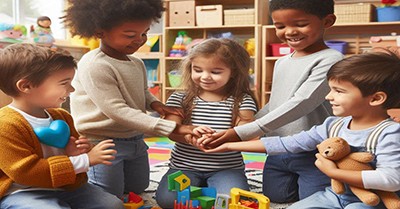




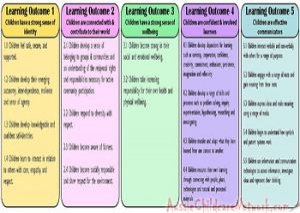 Here is the list of the EYLF Learning Outcomes that you can use as a guide or reference for your documentation and planning. The EYLF
Here is the list of the EYLF Learning Outcomes that you can use as a guide or reference for your documentation and planning. The EYLF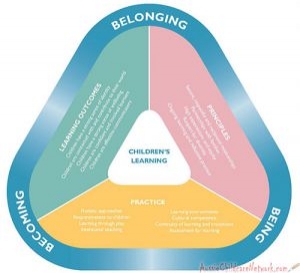 The EYLF is a guide which consists of Principles, Practices and 5 main Learning Outcomes along with each of their sub outcomes, based on identity,
The EYLF is a guide which consists of Principles, Practices and 5 main Learning Outcomes along with each of their sub outcomes, based on identity, This is a guide on How to Write a Learning Story. It provides information on What Is A Learning Story, Writing A Learning Story, Sample
This is a guide on How to Write a Learning Story. It provides information on What Is A Learning Story, Writing A Learning Story, Sample One of the most important types of documentation methods that educators needs to be familiar with are “observations”. Observations are crucial for all early childhood
One of the most important types of documentation methods that educators needs to be familiar with are “observations”. Observations are crucial for all early childhood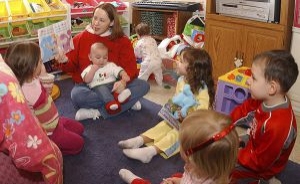 To support children achieve learning outcomes from the EYLF Framework, the following list gives educators examples of how to promote children's learning in each individual
To support children achieve learning outcomes from the EYLF Framework, the following list gives educators examples of how to promote children's learning in each individual Reflective practice is learning from everyday situations and issues and concerns that arise which form part of our daily routine while working in an early
Reflective practice is learning from everyday situations and issues and concerns that arise which form part of our daily routine while working in an early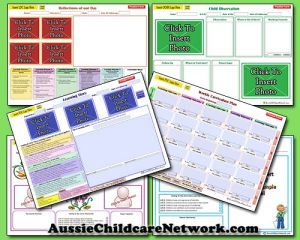 Within Australia, Programming and Planning is reflected and supported by the Early Years Learning Framework. Educators within early childhood settings, use the EYLF to guide
Within Australia, Programming and Planning is reflected and supported by the Early Years Learning Framework. Educators within early childhood settings, use the EYLF to guide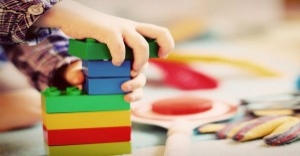 When observing children, it's important that we use a range of different observation methods from running records, learning stories to photographs and work samples. Using
When observing children, it's important that we use a range of different observation methods from running records, learning stories to photographs and work samples. Using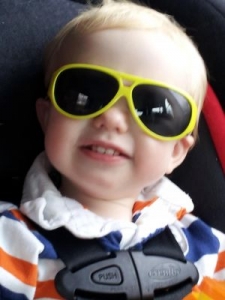 This is a guide for educators on what to observe under each sub learning outcome from the EYLF Framework, when a child is engaged in
This is a guide for educators on what to observe under each sub learning outcome from the EYLF Framework, when a child is engaged in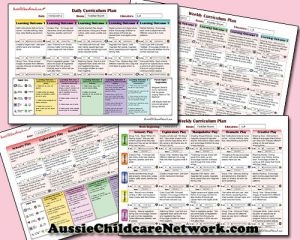 The Early Years Learning Framework describes the curriculum as “all the interactions, experiences, activities, routines and events, planned and unplanned, that occur in an environment
The Early Years Learning Framework describes the curriculum as “all the interactions, experiences, activities, routines and events, planned and unplanned, that occur in an environment